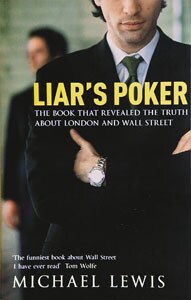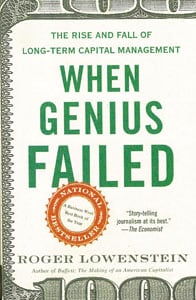
A Killing on the Markets
Everybody loves a good old blood-and-gore story. But some of the most heinous crimes don’t see so much as a single flesh wound being inflicted. Their stories are just as full of avarice, the criminals as arrogant in their belief that they’re too smart to be caught. Only tireless, sometimes inspired, investigation brings them, if you’ll pardon the pun, to book. Here are five books that give you the sordid details of some of world’s most notorious financial crimes ever
Den of Thieves
James B. Stewart, Simon & Schuster

We call the 1980s the Age of Greed and this book tells you why. It is the tale of an elaborate web of traders who, trusted with confidential information on mergers and acquisitions, used that information to play the stock market. As casually as you or I would pay for each other’s coffee, they exchanged secrets that caused enormous swings in share prices. They betrayed their clients, sold useless instruments to investors and used their superior intelligence to cheat the law. Simply put, this book nails the grand lie called investment banking.
The icons of the time were junk bond king Michael Milken, Boesky, suave i-banker Martin Siegel and the street-smart big mouth Dennis Levine.
Stewart details each man’s career as a separate strand, the unifying theme being their gamble on Wall Street. Their paths cross and what follows is a succession of betrayals within this evil fraternity that exposes everyone.
The Rogue Trader
Nick Leeson & Edward Whitley, Little, Brown Book Group, UK.
 Watford is an unremarkable neighbourhood in the northwest of London. Nicholas Leeson was born there and had a fairly ordinary childhood. Certainly no early acquaintance could claim to have predicted that he would go on to break Her Majesty’s Bank, the venerable Barings.
Watford is an unremarkable neighbourhood in the northwest of London. Nicholas Leeson was born there and had a fairly ordinary childhood. Certainly no early acquaintance could claim to have predicted that he would go on to break Her Majesty’s Bank, the venerable Barings.
Leeson was a lowly bank clerk who managed to become a derivatives trader for the bank in Singapore. He was asked to play the arbitrage between the values of the same stock index in Japan and Singapore.
But from Day One, he started making unauthorised trades. After initial gains he started to lose, but hid his losses in a special account. He got himself out of the mire more than once and started believing in his luck.
He even managed to get a fat bonus for the profits he never earned.
Unfortunately for him, an earthquake in Japan caused a plunge in the markets at a time when he had outstanding positions of $27 billion, about 50 times the bank’s capital. The 233-year-old Barings perished and Leeson went to jail.
The rest of the story is more human. He got cancer and was overcome with a humility that only the prospect of death produces. He decided to make a clean breast of it all and wrote this book.
The Smartest Guys in the Room
Bethany McLean & Peter Elkind, Penguin Group USA.
 If you ever need a metaphor for corporate fraud and corruption, try the word ‘Enron’.
If you ever need a metaphor for corporate fraud and corruption, try the word ‘Enron’.
The world’s leading energy company epitomised everything that was wrong with capitalist America, but that fact was unknown until its bankruptcy in 2001. The mandarins at the energy company grew so confident of their manipulative methods that they got more and more brazen until the bubble burst.
A hard-charging culture was at the root of the problem: Enron fired any employee who could not bring in enormous profits relative to his own wages. It dressed up its balance sheet to look healthier than it was, manipulated the market price of its stock and violated every law of the land. The thirst for profits drove the company so far as to cause blackouts in California, force electricity prices to surge and then sell back the hoarded power to make millions. A lesson in sheer devilry.
Liar’s Poker
Michael Lewis, Hodder & Stoughton.
 Liar’s Poker is a game of deceit: Each player tries to guess the digits of the bank notes held by others; bluff and counter-bluff all the way. No one excelled in it quite like John Meriwether and Lewis Ranieri.
Liar’s Poker is a game of deceit: Each player tries to guess the digits of the bank notes held by others; bluff and counter-bluff all the way. No one excelled in it quite like John Meriwether and Lewis Ranieri.
The easy lying, the ruthless demolition of the opponent, all so central to making money, came naturally to these Salomon Brothers traders. The author was just a baby-faced twenty-something when these gents were revered “Big Swinging Dicks” (the ultimate sobriquet in trader-speak). Salomon was king of the bond market; anything it underwrote sold in minutes.
The book explains how the company operated purely for its own profit, even at the cost of its customers and investors. Blowing up a client by selling him a dud investment from the firm’s own trading book was a daily affair. It sucked dry many a savings and loans institution to feed its frenzy.
Eventually, Salomon was caught rigging Treasury bond auctions in order to corner more than its legal share. In time, it dissolved into Citigroup. After you read this book, you’ll never
again trust an agent trying to sell you a financial product.
When Genius Failed
Roger Lowenstein, Random House.
 What Meriwether did at Salomon Brothers was child’s play compared to what he did later at his own hedge fund. An investigation into his dealings hastened his departure from Salomon. But soon he was back with Long Term Capital Management, a fund that seemed to double your money in two years, but actually ended up wiping it out. In just four years, it built up positions of $1 trillion, a staggering sum that rallied the Federal Reserve and Wall Street banks to try and save this white elephant raging in musth.
What Meriwether did at Salomon Brothers was child’s play compared to what he did later at his own hedge fund. An investigation into his dealings hastened his departure from Salomon. But soon he was back with Long Term Capital Management, a fund that seemed to double your money in two years, but actually ended up wiping it out. In just four years, it built up positions of $1 trillion, a staggering sum that rallied the Federal Reserve and Wall Street banks to try and save this white elephant raging in musth.
Meriwether’s fund had been engaging in the most dangerous tricks in the trade: Leverage and audacity. It borrowed several dozen times its own capital and found it had run short of instruments to invest in. Then, with imbecility noticed in hindsight, the fund took aggressive positions from which it could not retreat.
Made in India
Take your pick.
Though we’ve had our fair share of scams in India, we’re yet to see a book do any of them justice. Ramalinga Raju’s shennanigans at Satyam may have changed that; we hear that a couple of very capapable writers are on the job.
We can hardly wait!
(This story appears in the 30 November, -0001 issue of Forbes India. To visit our Archives, click here.)




